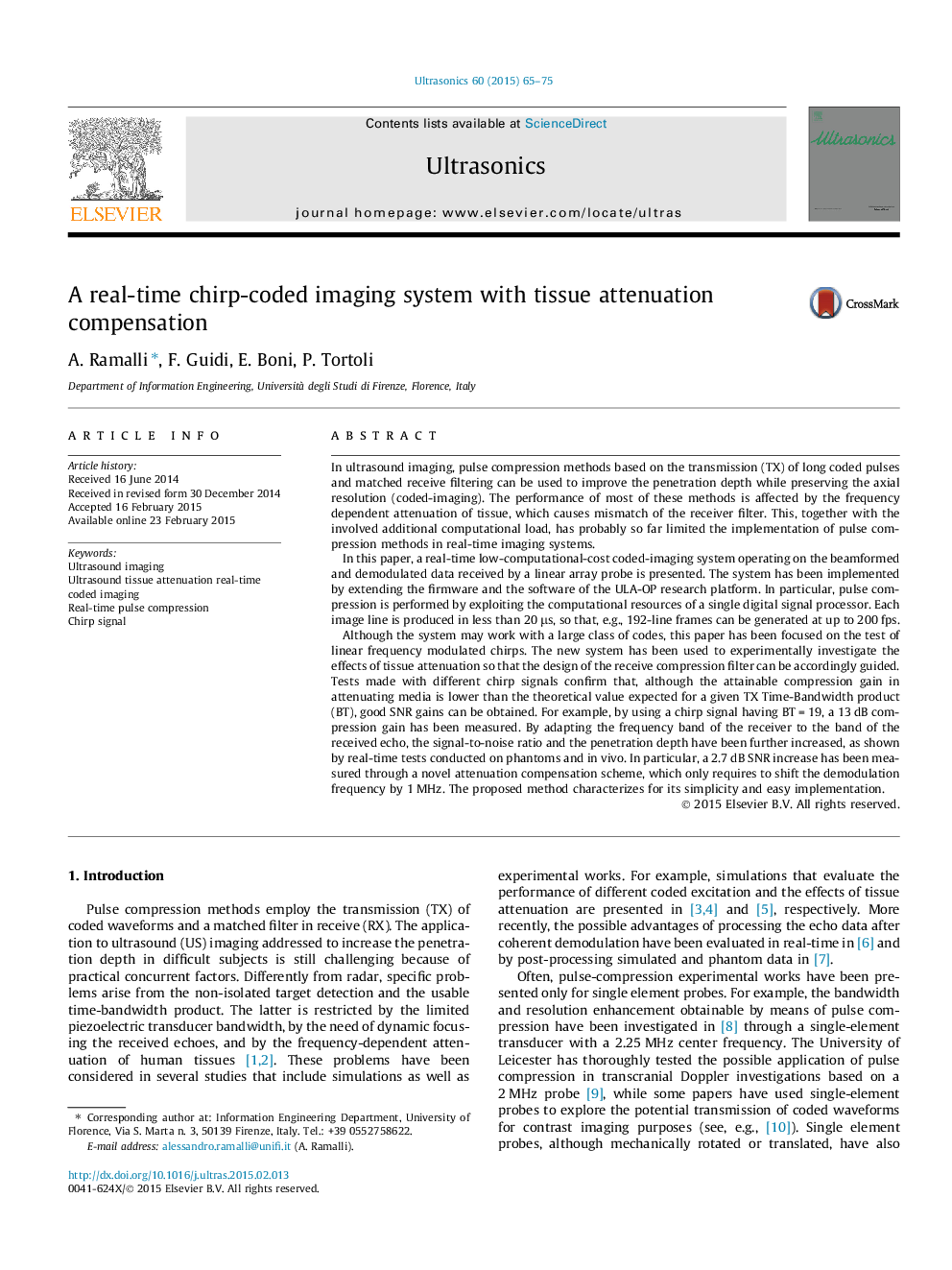| کد مقاله | کد نشریه | سال انتشار | مقاله انگلیسی | نسخه تمام متن |
|---|---|---|---|---|
| 1758703 | 1523209 | 2015 | 11 صفحه PDF | دانلود رایگان |
• Details of a low-computational-cost real-time coded imaging system are presented.
• Attenuation effects in coded imaging are examined to guide the design of waveforms.
• An offset of the demodulation frequency increases gain and penetration depth.
In ultrasound imaging, pulse compression methods based on the transmission (TX) of long coded pulses and matched receive filtering can be used to improve the penetration depth while preserving the axial resolution (coded-imaging). The performance of most of these methods is affected by the frequency dependent attenuation of tissue, which causes mismatch of the receiver filter. This, together with the involved additional computational load, has probably so far limited the implementation of pulse compression methods in real-time imaging systems.In this paper, a real-time low-computational-cost coded-imaging system operating on the beamformed and demodulated data received by a linear array probe is presented. The system has been implemented by extending the firmware and the software of the ULA-OP research platform. In particular, pulse compression is performed by exploiting the computational resources of a single digital signal processor. Each image line is produced in less than 20 μs, so that, e.g., 192-line frames can be generated at up to 200 fps.Although the system may work with a large class of codes, this paper has been focused on the test of linear frequency modulated chirps. The new system has been used to experimentally investigate the effects of tissue attenuation so that the design of the receive compression filter can be accordingly guided. Tests made with different chirp signals confirm that, although the attainable compression gain in attenuating media is lower than the theoretical value expected for a given TX Time-Bandwidth product (BT), good SNR gains can be obtained. For example, by using a chirp signal having BT = 19, a 13 dB compression gain has been measured. By adapting the frequency band of the receiver to the band of the received echo, the signal-to-noise ratio and the penetration depth have been further increased, as shown by real-time tests conducted on phantoms and in vivo. In particular, a 2.7 dB SNR increase has been measured through a novel attenuation compensation scheme, which only requires to shift the demodulation frequency by 1 MHz. The proposed method characterizes for its simplicity and easy implementation.
Journal: Ultrasonics - Volume 60, July 2015, Pages 65–75
